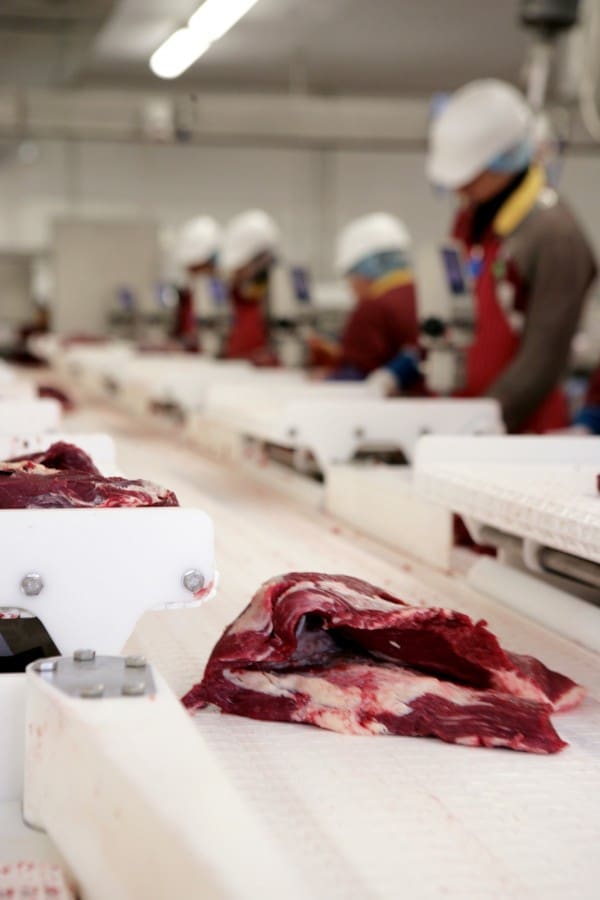THERE’S been solid rises in slaughter grid prices right across Queensland and NSW over the past week, driven by a range of supply and demand factors.
 Most Queensland grids have listed 10c/kg on steers – in places up to 15c/kg higher – with cows 5-10c better than where they sat this time a week ago.
Most Queensland grids have listed 10c/kg on steers – in places up to 15c/kg higher – with cows 5-10c better than where they sat this time a week ago.
Southern Queensland grassfed heavy steers four-teeth, are restored to 495-505c/kg, while heavy cows are being negotiated this week at rates 425-430c/kg, depending on plant location.
A larger northern NSW export processor has offers out in the market this week of 470c/kg on four-tooth grassfed heavy steer, and 420c/kg on heavy cows. Grids more generally across NSW rose 5c/kg on average last week, with offers at Teys Wagga up 10c/kg since last Tuesday. Victorian processor grids remain unchanged, with offers last week averaging 518c/kg for four-tooth heavy grass steer and 410c/kg on cows.
In a price differential that would have been impossible to imagine five years ago, steers entering certified grassfed brand programs in southern Australia underpinned by MSA, continue to attract outstanding premiums in the marketplace. For example the Teys Grasslands program is this week offering 570c/kg for eligible grassfed cattle at the company’s Wagga plant – a hefty 40c/kg premium over everyday YG grassfed steer at the same plant (540c) and top cell MSA grainfed YG steer at 560c. How times have changed.
Processor contacts have offered a wide range of reasons for the decision to lift Queensland direct consignment offers over the past week, suggesting a number of factors may be in play. Below is a brief list, in no particular order, but we’ll let readers make up their own mind about the likely influences in their region:
- General shortening in slaughter cattle supply in the market this past week or so, after earlier steady inflows.
- Saleyards are typically the first to react when such a supply limitation emerges, with Queensland and northern NSW yards prices having risen in the past fortnight by 5-20c/kg in places. The lead of the cows offered at Toowoomba sale yesterday were making around 238c/kg liveweight. That’s promoted a rise in direct consignment offers to keep pace with yards prices.
- A little more buying aggression from southern (NSW) processor operators, in both saleyards and paddock purchases as far north as Central Queensland, has also contributed to SEQ grid rises in the past week. That’s applied to cows in particular, but also some better lines. Further north, live export prices remain strong, prompting traditional processors to push harder.
- The Aussie dollar slipped to a new twenty-month low at US72c today – down US 1.5c since late August, putting some extra competitive wind in the sails of Australian beef exporters.
“Supply is very much hand to mouth at the moment,” one large Queensland processor contact said this morning, when explaining recent grid price rises. “But if we can get through the next couple of weeks, October might not be too bad for supply again, assuming it remains dry,” he said.
“We’d expect to see a few oats-finished cattle start to appear from the Darling Downs and Maranoa regions in the next few weeks – but it won’t be a big oats turnoff this year, and certainly won’t last through to November, like it can in a good weather year.
Processor margin on cows has apparently slipped in the past week, as grinding meat demand remains relatively subdued. “Cows are all about volume at present, rather than margin,” one processor said.
Weekly kill
Eastern states slaughter numbers eased one percent last week, on the back of a few less cattle coming to market, and recent instability in the weather prompting a few suppliers to sit back.
The five-state tally of 141,181 head was still 10pc higher than this same week last year – continuing a patter that has been evident for most of the past six months, as drought liquidation continues.
Queensland’s numbers last week reached 76,615 head, 2pc higher than the previous week and 13pc higher, year-on-year. NSW slaughter last week declined 5pc to just short of 43,000 head, still 2pc higher than last year; while Victoria lifted 1pc to 23,104 head for the week, 21pc higher than last year.
South Australia processed 4683 head for the seven days to Friday, down 7pc, while Tasmania eased 11pc on the previous week to 3874 head.

Good to see prices on the rise, hopefully this may alleviate some of the drought impact on us producers. Agree with your comments David, but I don’t think JBS or NH have made any of their grids public yet? It’d be good if they did.
Whilst it has been a positive outcome for Processors to put their grids up for all to have a look at, I would also suggest that compliance rates to target market are part of the equation for overall profitability across the supply chain. I can remember being at a producer forum one day and listening to Geoff Teys mention the MSA top cell compliance attained at the Wagga plant, those of us living in often more challenging environments can only look on in envy, and possibly set a MSA cell target that is more attainable, but look to attain the same compliance rates as those obviously good producers supplying the Wagga plant.
As someone that looks to supply a successful brand, which has returns based on the value of the product packed by the brand program, I would ask if consistency and compliance are also highly important to successful brands?
Maybe these issues should also be part of our discussions around market reporting?